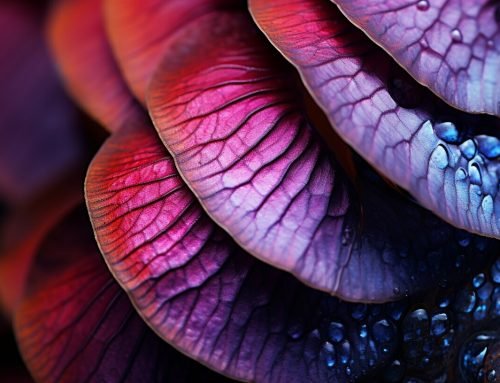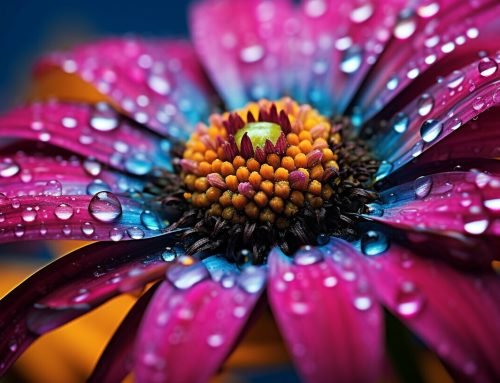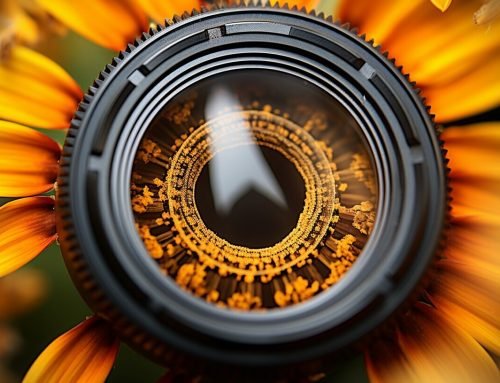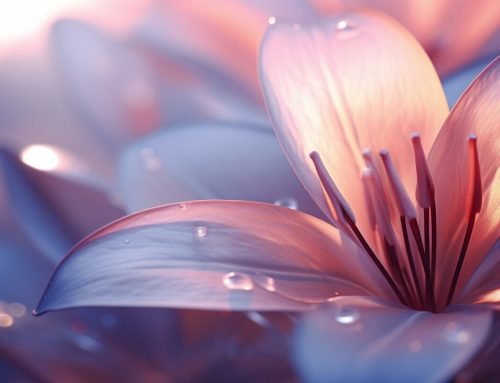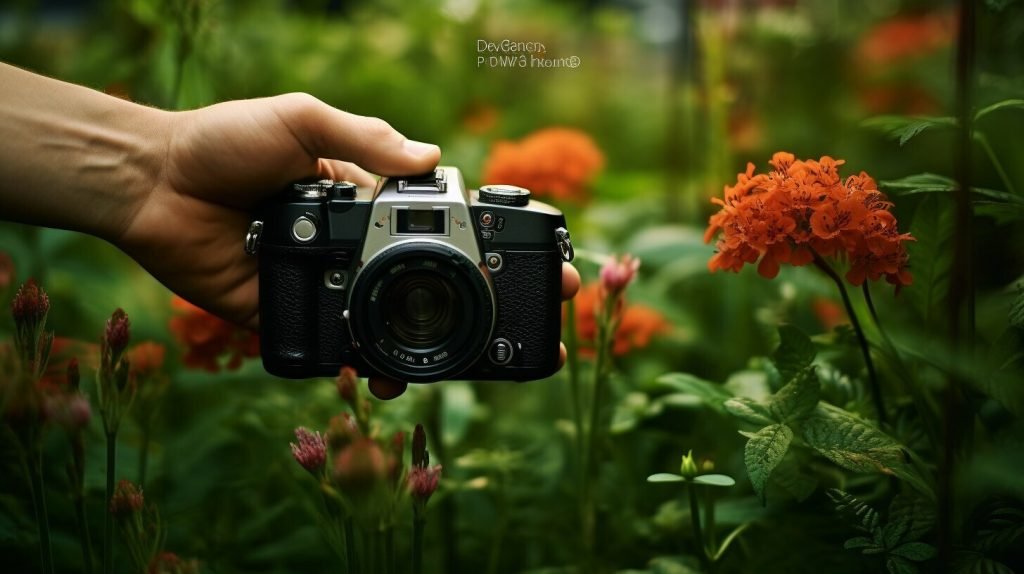
Macro photography offers a unique perspective on the world, allowing you to capture intricate details and hidden beauty in your subjects. Whether you’re a professional photographer or a hobbyist, diving into the world of macro photography can be an exciting and rewarding experience. In this article, we will explore the top macro photography subjects, providing you with inspiration and tips to enhance your macro photography skills.
Key Takeaways:
- Macro photography offers a unique perspective on the world, capturing intricate details and hidden beauty.
- Being familiar with your gear and learning about your subject are essential for great macro shots.
- Experiment with different angles, lighting, and composition to capture the hidden beauty in ordinary things.
- Consider using tools like reflectors and diffusers to manipulate light and create stunning macro photographs.
- Enhance your macro photography skills with tuition or classes that cover technical and artistic aspects of macro photography.
Unearthing Nature’s Hidden Patterns
Step into the enchanting realm of nature’s hidden patterns and discover the extraordinary details waiting to be captured through your lens. Macro photography allows us to explore the intricate beauty of nature in ways we never thought possible. From the delicate spirals found in seashells to the mesmerizing patterns of fern fronds, nature provides an endless array of subjects for us to discover.
One photographer who has fully embraced the world of macro photography is Paul V Harrison. His passion for capturing the hidden details of nature led him to stumble upon a tiny jumping spider called Maratus Clupeatus while photographing a flower in a local park. Living in Western Australia, Harrison is surrounded by a diverse range of macro subjects, including the stunning peacock spiders.
When it comes to capturing these intricate patterns, Harrison emphasizes the importance of being familiar with your gear. A reasonable macro lens and a solid understanding of camera settings, such as aperture, shutter speed, and ISO, are essential. Additionally, tools like reflectors and diffusers can help manipulate light for more dramatic shots. But perhaps most importantly, Harrison highlights the need for patience and practice. Macro photography is a skill that develops over time, and it’s through experimentation and persistence that we can truly capture the hidden beauty of nature’s patterns.
Exploring Nature’s Hidden Patterns: Tips from Don Orkoskey
For those looking to further refine their macro photography skills, photographer Don Orkoskey offers a macro photography class that covers both the technical and artistic aspects of this genre. The class delves into camera settings, composition techniques, and even editing tips to help bring out the best in your macro shots.
When it comes to subject ideas, the possibilities are endless. Nature’s spiral patterns, pollen trails, water droplets, insects, flowers, mushrooms, and even the textures of everyday objects all offer unique and captivating subjects for macro photography. The key is to pay attention to the smallest details, experiment with different angles and lighting, and allow your creativity to flourish as you capture the hidden beauty in ordinary things.
So grab your camera, venture into the great outdoors, and let the wonders of nature’s hidden patterns inspire you. With a keen eye, a little technical know-how, and a lot of patience, you’ll be amazed at the extraordinary details waiting to be captured in your macro shots.
Capturing the Magic of Tiny Creatures
Get up close and personal with the captivating world of insects and discover how to immortalize their mesmerizing beauty through macro photography. One photographer, Paul V Harrison, shares his passion for capturing the intricate details of tiny creatures, such as the colorful peacock spiders. Western Australia, where he currently resides, is a trove of macro photography subjects. Harrison emphasizes the importance of being familiar with your gear, learning about your subject, and practicing patience to capture the perfect shot.
To achieve stunning macro photographs of insects, Harrison recommends using a reasonable macro lens that allows you to get close to your subject while maintaining sharp focus. Understanding and controlling aperture, shutter speed, and ISO settings is essential to capture the delicate details and vibrant colors of these tiny creatures. Tools like reflectors and diffusers can help manipulate light, creating the perfect lighting conditions for your macro shots.
For those who want to enhance their macro photography skills further, photographer Don Orkoskey offers a macro photography class that covers both the technical and artistic aspects of macro photography. Participants will learn about camera settings, composition techniques, and editing methods to bring out the best in their macro shots. This guidance can provide invaluable insights and help take your macro photography to the next level.
When it comes to macro photography subjects, the options are endless. Insects, flowers, and everyday objects all offer unique details and textures that can be captured with a macro lens. Take the time to explore the world around you, paying attention to the intricate patterns, vibrant colors, and hidden beauty that often go unnoticed. Experiment with different angles, lighting, and techniques to unleash your creativity and capture captivating macro shots.
Exploring the Delicate Beauty of Flowers
Immerse yourself in a world of vibrant hues and delicate details as we unravel the secrets to capturing the breathtaking beauty of flowers through macro photography. Flowers have long been a favorite subject for macro photographers, and it’s easy to see why. From the soft petals to the intricate patterns, capturing the essence of a flower up close allows us to appreciate the intricate details that often go unnoticed.
As photographer Paul V Harrison shares, finding the perfect flower to capture requires patience and a keen eye. “Each flower has its unique beauty, and it’s important to take the time to study and understand your subject,” he advises. By doing so, you can discover the optimal angles and lighting to showcase the flower’s beauty.
To capture the delicate details, a reasonable macro lens is essential. The closer you can get to your subject, the more intricate the details you can capture. Experiment with different apertures to control depth of field and bring focus to specific areas of the flower. Adjusting shutter speed and ISO settings will help you achieve the desired level of sharpness and clarity.
Don Orkoskey, another experienced macro photographer, emphasizes the importance of composition. “Consider the placement of the flower within the frame, as well as the background and foreground elements,” he suggests. Adding a sense of depth and context to your images can elevate them to the next level. Don’t be afraid to experiment with different angles, focus points, and lighting conditions to create truly unique compositions.
| Macro Photography Tips for Capturing Flowers |
|---|
| 1. Study and understand your subject. |
| 2. Experiment with different apertures to control depth of field. |
| 3. Adjust shutter speed and ISO settings for clarity. |
| 4. Pay attention to composition and framing. |
| 5. Experiment with angles, focus points, and lighting. |
With the right tools and techniques, macro photography can unlock a whole new world of beauty within flowers. So grab your camera, seek out the perfect blooms, and let your creativity flourish as you capture the delicate details that make each flower unique.
Discovering the Wonders of Everyday Objects
Open your eyes to the hidden wonders of everyday objects and master the art of capturing the intricate textures and details that lie beneath the surface. Macro photography allows us to bring a fresh perspective to the ordinary, revealing the extraordinary within. Whether it’s the weathered cracks on a wooden door, the fine grains of sand on a seashell, or the delicate patterns on a leaf, there is beauty to be found in every corner of our daily lives.
One of the joys of macro photography is the opportunity to explore the textures of everyday objects. By getting up close and personal with your subject, you can reveal the intricate details that often go unnoticed. From the rough, weathered edges of a stone wall to the smooth, glassy surface of a water droplet, every object holds its own unique story.
To capture these details effectively, it’s important to experiment with different angles and lighting. Play with the direction and intensity of light to accentuate the textures, casting shadows and highlights that add depth and dimension to your photographs. Additionally, consider using props or backgrounds that complement the subject and enhance its texture. A simple fabric or piece of paper can serve as a backdrop to bring out the fine details of an object.
Remember, practice is key when it comes to mastering macro photography. Take the time to study your subjects and experiment with different settings on your camera. Adjusting the aperture, shutter speed, and ISO can greatly impact the outcome of your images, allowing you to control the depth of field, freeze motion, or capture more light in low-light situations. And don’t forget to have fun along the way! Sometimes the best shots come from unexpected angles or happy accidents, so embrace the process and let your creativity soar.
| Recommended Everyday Objects for Macro Photography | Examples |
|---|---|
| Leaves | |
| Wooden Surfaces | |
| Rocks and Stones | |
| Textured Fabrics |
So, grab your camera, explore the nooks and crannies of your surroundings, and unlock the hidden beauty in everyday objects through the lens of macro photography. You never know what captivating textures and details you might discover along the way.
Unlocking the Secrets of Water Droplets
Dive into the world of water droplets and discover the secrets to capturing their mesmerizing beauty through the lens of macro photography. One renowned photographer, Paul V Harrison, shares his passion for capturing the intricate details of water droplets and offers valuable tips for achieving stunning macro shots.
Harrison, who discovered his love for macro photography while shooting a flower in a local park, became fascinated with the mesmerizing shapes and reflective surfaces of water droplets. He advises aspiring macro photographers to be familiar with their gear, experiment with different angles, and learn about the behavior of water droplets. By patiently observing and waiting for the perfect moment, you can capture the fleeting beauty of these tiny wonders.
When it comes to gear, Harrison recommends using a reasonable macro lens to capture sharp details and magnify the droplets. Learning how to control aperture, shutter speed, and ISO settings is crucial to achieve the desired depth of field and freeze the motion of the droplets. Additionally, using tools like reflectors and diffusers can help manipulate the lighting conditions and enhance the visual impact of your photographs.
If you’re looking to enhance your skills further, photographer Don Orkoskey offers a macro photography class that covers the technical and artistic aspects of macro photography. From understanding camera settings to composing compelling shots, the class provides valuable insights and techniques to help you capture the magic of water droplets and other macro subjects.
So, whether you find inspiration in the intricate details, the mesmerizing shapes, or the reflective surfaces of water droplets, macro photography offers a unique opportunity to explore and capture their hidden beauty. With the right gear, knowledge, and techniques, you can unlock the secrets of water droplets and create captivating macro shots that showcase the intricate wonders of the world around us.
| Key Points: | Macro Photography Tips for Water Droplets |
|---|---|
| Familiarize yourself with your gear | Use a reasonable macro lens to capture sharp details |
| Learn about your subject | Observe the behavior of water droplets and wait for the perfect moment |
| Control aperture, shutter speed, and ISO settings | Achieve the desired depth of field and freeze the motion of droplets |
| Use reflectors and diffusers | Manipulate lighting conditions for enhanced visual impact |
Enhancing Your Macro Photography Skills
Elevate your macro photography skills to new heights as we delve into techniques, tools, and creative ideas to help you capture breathtaking shots of various macro subjects. Whether you’re a beginner or an experienced photographer, honing your skills in macro photography can open up a whole new world of artistic possibilities and allow you to discover the hidden beauty in the details.
Techniques for Capturing Stunning Macro Shots
One of the key techniques to master in macro photography is achieving sharp focus on your subject. To ensure crisp and clear images, consider using a tripod to eliminate camera shake and increase stability. Experiment with different focusing techniques, such as manual focus or using focus stacking, to capture every intricate detail.
Another essential aspect of macro photography is understanding and controlling your depth of field. With a shallow depth of field, you can isolate your subject and create a dreamy, blurry background, while a larger depth of field will ensure that more of your subject is in focus. Play around with different aperture settings to achieve the desired effect.
Tools to Enhance Your Macro Photography
Alongside mastering the technical aspects, utilizing the right tools can greatly enhance your macro photography skills. Reflectors and diffusers are invaluable for manipulating light and minimizing harsh shadows. They allow you to control the lighting conditions and create a more even and flattering illumination on your subject.
Additionally, consider investing in a macro lens that suits your camera system. A dedicated macro lens will provide optimum image quality and allow you to get up close and personal with your subjects. Experiment with different focal lengths to find the lens that best suits your style of macro photography.
Creative Ideas for Macro Photography Subjects
The beauty of macro photography lies in the endless possibilities for subject matter. Nature’s spiral patterns, pollen trails, water droplets, insects, flowers, mushrooms, and textures of everyday objects all offer fascinating macro photography opportunities. Keep an eye out for hidden details and unique perspectives that can transform the ordinary into extraordinary.
Remember, practice is key to improving your macro photography skills. Take the time to explore the world around you, experiment with different techniques, and challenge yourself to capture the essence of your chosen subjects. With a keen eye for detail and a willingness to push creative boundaries, you’ll be amazed at the captivating shots you can produce.
Unlocking the Beauty in the Details
Through macro photography, we unlock the beauty in the details, revealing a stunning world that often goes unnoticed. This artistic pursuit allows us to capture the intricacy and wonder of the smallest subjects, showcasing their hidden beauty in a mesmerizing way.
Paul V Harrison, an avid macro photographer, discovered his passion for this genre while exploring a local park. It was there that he stumbled upon a tiny jumping spider called Maratus Clupeatus, and from that moment, he was hooked. Living in Western Australia, Harrison is fortunate to have access to a wide range of macro subjects, including the mesmerizing peacock spiders.
Harrison emphasizes the importance of being familiar with your gear and learning about your chosen subject. Patience is key when it comes to macro photography, as capturing the perfect shot often requires waiting for the right moment. He recommends using a good macro lens to achieve sharpness and detail, and understanding how to control aperture, shutter speed, and ISO settings to capture the subject in the best possible way. Tools like reflectors and diffusers can also be used to manipulate light and enhance the overall composition.
For those looking to enhance their macro photography skills, photographer Don Orkoskey offers a specialized class that covers both the technical and artistic aspects of macro photography. Participants will learn about camera settings, composition, and editing techniques to elevate their macro shots to the next level.
When it comes to macro photography subjects, the possibilities are endless. Nature provides a wealth of opportunities, with its spiral patterns, pollen trails, and delicate water droplets. Insects, flowers, mushrooms, and even the textures of everyday objects can all be transformed into extraordinary macro subjects.
The key to successful macro photography is paying attention to the smallest details, experimenting with different angles and lighting, and capturing the hidden beauty in ordinary things. By honing your skills and exploring a wide range of subjects, you can unlock a whole new dimension of photography, where even the tiniest details have the power to captivate and inspire.
FAQ
What are some Popular macro photography subjects?
Popular macro photography subjects include insects, flowers, water droplets, and textures of everyday objects.
How can I capture the hidden patterns in nature?
To capture nature’s hidden patterns, experiment with different angles and lighting techniques. Pay attention to details and explore subjects like seashells, fern fronds, and other natural formations.
What techniques can I use to capture the magic of tiny creatures?
To capture the magic of tiny creatures, utilize a reasonable macro lens and learn how to control aperture, shutter speed, and ISO settings. Additionally, practice patience and learn about the behavior and habitats of the creatures you want to photograph.
How can I enhance my macro photography skills?
Enhance your macro photography skills by familiarizing yourself with your gear, mastering camera settings, and utilizing tools like reflectors and diffusers to manipulate light. Consider getting some tuition or taking a macro photography class to improve your technique.
What can I discover when exploring the delicate beauty of flowers?
When exploring the delicate beauty of flowers, you can capture their intricate details, vibrant colors, and unique textures. Experiment with different compositions and lighting techniques to create stunning macro photographs.
How can I unlock the beauty in everyday objects?
To unlock the beauty in everyday objects, pay attention to the details and explore the textures and intricate patterns that often go unnoticed. Experiment with different angles and lighting to capture the extraordinary in the mundane.
What are some creative macro photography ideas?
Some creative macro photography ideas include capturing nature’s spiral patterns, pollen trails, and exploring the reflective surfaces and shapes of water droplets. Experiment with different subjects and techniques to push your boundaries and capture unique and captivating shots.
How can macro photography help me discover the hidden beauty in the world?
Macro photography allows you to explore the hidden beauty in the details of the world around us. By focusing on small subjects and honing your skills, you can capture captivating shots that showcase the intricacy and wonder that often goes unnoticed.

